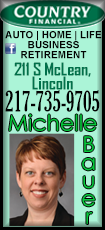Analysis-Inflation vs jobs hole: A tradeoff the Fed still hopes to skirt
 Send a link to a friend
Send a link to a friend
 [August 25, 2021] By
Howard Schneider [August 25, 2021] By
Howard Schneider
WASHINGTON (Reuters) - The Federal
Reserve's year-old promise to drive U.S. employment to new heights came
at a wrenching moment last August, with 12 million jobs still missing
due to the pandemic, inflation cratering to half the central bank's
target, and no clear endgame for the worst health crisis in a century.
Then came three vaccines, a steady jobs recovery, trillions more dollars
in fiscal stimulus, the fastest economic growth in 40 years - and
surging prices.
A steady shift in Fed rhetoric since inflation jumped in the spring has
now triggered debate about how deep the Fed's new commitment to jobs
truly runs, and how long it will tolerate high inflation as it waits for
a "broad and inclusive" rebound in employment.
No decisions have been made. The Fed is actively talking about when to
reduce its $120 billion per month emergency bond purchases, and Fed
Chair Jerome Powell may discuss that in Friday remarks to a virtual
iteration of its annual Jackson Hole research conference. The more
consequential call over when to raise interest rates from near zero
remains, in all likelihood, far down the road.

But with each successive report showing inflation above the Fed's 2%
target, the tone has shifted. Fed officials now readily acknowledge
inflation may be more persistent than they thought. Moreover, some are
lowering expectations of a full rebound to the pre-pandemic level of
jobs or labor force participation.
Inflation, on average
https://graphics.reuters.com/USA-FED/FRAMEWORK/
byvrjjmbkve/chart.png
The debate won't be resolved soon. But the suddenly two-sided nature of
the discussion has, to some, cast the value of the Fed's new approach
into doubt.
"I think they have lost their nerve," said Adam Posen, president of the
Peterson Institute for International Economics and a former member of
the Bank of England's Monetary Policy Committee. In recent comments,
"they have not reinforced their commitment to broad and inclusive gains"
in the labor market.
Richard Clarida, the Fed's influential chair, would disagree. At a
recent presentation to the Peterson Institute, he said his outlook is
for inflation above 2% for three years running, for unemployment so low
by the end of 2022 that gains would be broadly felt and jobs returned to
the pre-pandemic level, and a rate increase in 2023 "entirely
consistent" with the Fed's new approach.
INFLATION VS JOBS
Arguably the last few inflation readings, the latest being almost twice
the targeted 2% level, would have been confronted more aggressively by
previous Feds.
Some feel a tougher approach may be needed now.
"It is getting a little old to say that this is a transitory increase in
prices," said Vincent Reinhart, chief economist at Mellon, pointing to
surveys showing businesses ready and able to pass through price hikes.
"If firms say they are worried about prices paid and they have pricing
power then...we donít have price stability. The wheels are greased for
costs to pass through."

Under the new framework, though, the Fed has pledged not to nip job
growth in the bud and, to be certain inflation hits the 2% target on
average, will allow it to go above that level "moderately...for some
time."
When the new strategy was rolled out, however, it carried an even deeper
sort of pledge. Policymakers have long seen tension between unemployment
and inflation. If inflation gets too high, the Fed can tame it through
rate increases, albeit it at the cost of higher unemployment. When
inflation is weak or unemployment high, it can cut rates and trade more
jobs for higher prices.
[to top of second column] |

An In-N-Out Burger advertises for workers at their restaurants
location in Encinitas, California, U.S., May 10, 2021. REUTERS/Mike
Blake/File Photo

Over 10 years of economic expansion after the 2007-to-2009 recession, that
relationship did not hold. As unemployment fell, inflation remained muted, and
Fed officials concluded they could exploit that and take more inflation risk to
create the type of "hot" economy and robust job market that helps the less
well-off.
Inflation and unemployment
https://graphics.reuters.com/USA-FED/FRAMEWORK/
lgpdwwjajvo/chart.png
Equity is not a goal addressed in the Fed's congressional mandate, but officials
have given the issue more attention as the economic costs of inequality have
become better appreciated.
The quandary arose when the pandemic reanimated what the Fed thought it had
escaped: conflict between inflation and jobs.
In the thick of the framework debate in 2019 the Fed saw ample jobs and low
inflation; now inflation is high, but with 6 million fewer people working than
before the pandemic.
That has forced an earlier-than-expected reckoning over issues left unresolved
in the new strategy.
What does "moderately" mean when it comes to an inflation overshoot? How fully
can the economy recreate the pre-pandemic conditions where, for instance,
unemployment hit record lows for African Americans and the share of adults
employed or looking for work was climbing steadily?
The "labor force participation rate" hit 63.4% in January 2020. It's now 61.7%.
Black unemployment hit a record low 5.2% in August of 2019, and even then was
1.8 percentage points higher than for whites. As of July it was 8.2%, compared
to 4.8% for whites.
Varying unemployment
https://graphics.reuters.com/USA-FED/FRAMEWORK/
znpneelnyvl/chart.png
AN 'AMBITIOUS' GOAL
With inflation gnawing, some Fed officials have begun nipping at what to expect
from the jobs recovery.

Clarida, rather than seeing a full rebound of the labor force participation
rate, says it can return to an unspecified "demographic trend" dragged lower by
the aging population.
Where Powell has talked about the plight of displaced workers, he also notes the
number of additional people, perhaps 2 million or more, who retired during the
pandemic - thus lengthening the time to get back to the pre-pandemic level of
jobs, and increasing the likelihood the Fed may raise interest rates before that
happens.
Real Federal Funds Rate
https://graphics.reuters.com/USA-FED/FRAMEWORK/
zjpqkkndmpx/chart_eikon.jpg
Much depends on inflation. If it proves the product of global supply shocks and
reopening, and recedes on its own, the potential tradeoff with the job market
eases.
If not, then the Fed's priorities will be tested in ways not envisioned when the
new strategy was approved.
"They set a very ambitious goal. This is year one...We don't know if it's
successful for at least a couple of years," said Edward Al-Hussainy, senior
rates and currency analyst for Columbia Threadneedle Investments. "The first
priority is still the recovery in the labor market...People are starting to lose
focus on that."
(Reporting by Howard Schneider; Editing by Dan Burns and Andrea Ricci)
[© 2021 Thomson Reuters. All rights
reserved.] Copyright 2021 Reuters. All rights reserved. This material may not be published,
broadcast, rewritten or redistributed.
Thompson Reuters is solely responsible for this content. |